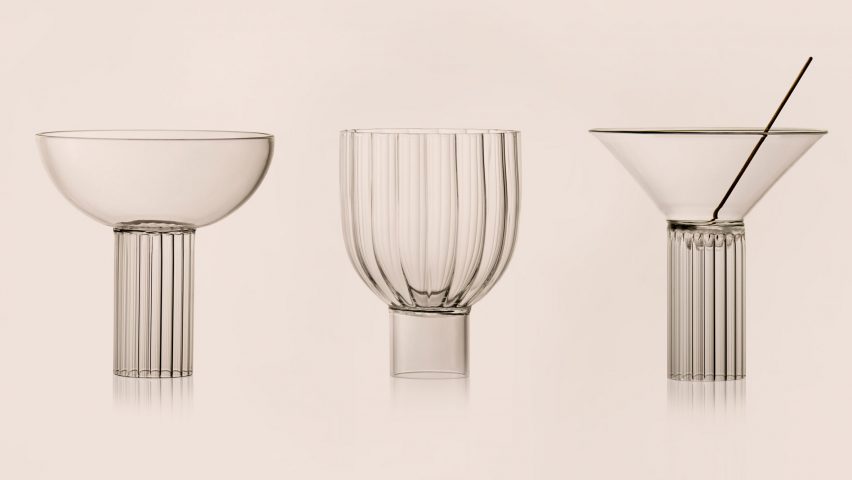Argentinian designer Agustina Bottoni has created a trio of cocktail glasses called Calici Milanesi, which recall the form the design of a Milanese villa built in the 1930s.
The collection comprises three pieces of rippled glassware modelled on the work of Italian architect Piero Portaluppi, who designed modernist buildings in Milan in the 1930s and 1940s.
In particular, the glassware is designed to recall the geometric shapes and volumes of Villa Necchi Campiglio, designed by Portaluppi in 1932.
"I was mostly inspired by the work of Italian architect Piero Portaluppi, who contributed to the Milanese splendour in the 1930s and 40s. His work is very striking and visual," Bottoni told Dezeen.
"I especially appreciated one of my favourite spots to visit in Milan: the imposing Villa Necchi Campiglio," she continued.
"The residence was built for a prominent industrial upper-class family, and it flawlessly articulates geometric shapes and volumes, using the most exquisite combinations of fine materials. Its strong graphic compositions inspired me to create Calici."
Bottini wanted the collection to reflect the Milanese tradition of "aperitivo" where people meet with friends for cocktails.
"The Aperitivo is an everyday ritual and a well-deserved pause for the busy Milanese lifestyle," said Bottoni. "This glassware trio is a homage to the city's most indulgent tradition. Its striking geometric shapes recall the modern architectural gems of Milan while elevating your drink of choice."
She began by experimenting with paper models to construct the desired shapes and volumes, before creating the final products from borosilicate glass, which she chose for its strength.
"We had to produce a few prototypes, experimenting with proportions and even with coloured glass, until we corrected technical issues and worked on the right proportions," she explained.
The final pieces were presented at Milan design week, which took place earlier this year.
Also at Milan design week was Dutch studio Belén, that presented its line of all-natural, textile-based products, and Royal College of Art graduate Christophe Machet, who used a huge custom-built CNC machine to transform sewage pipes into chairs.

